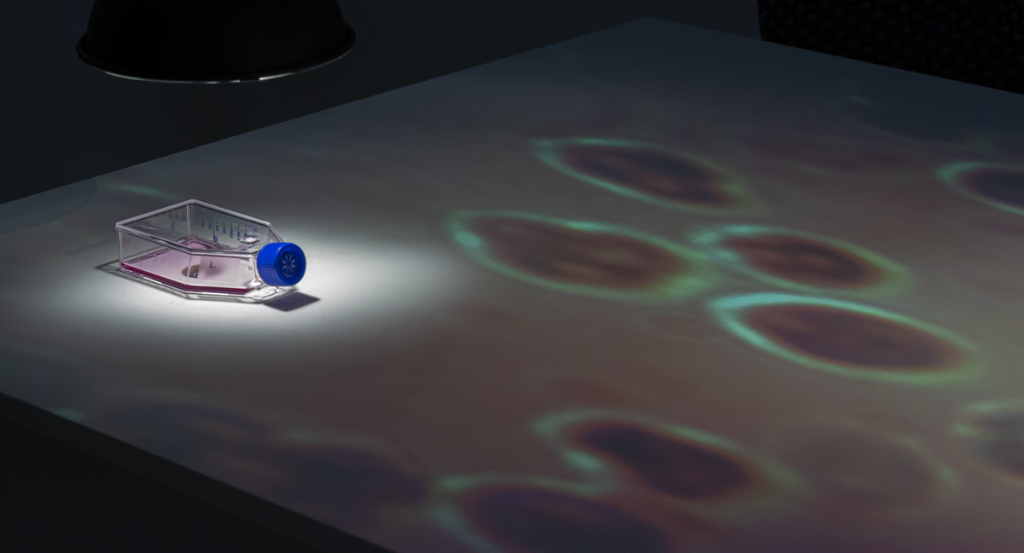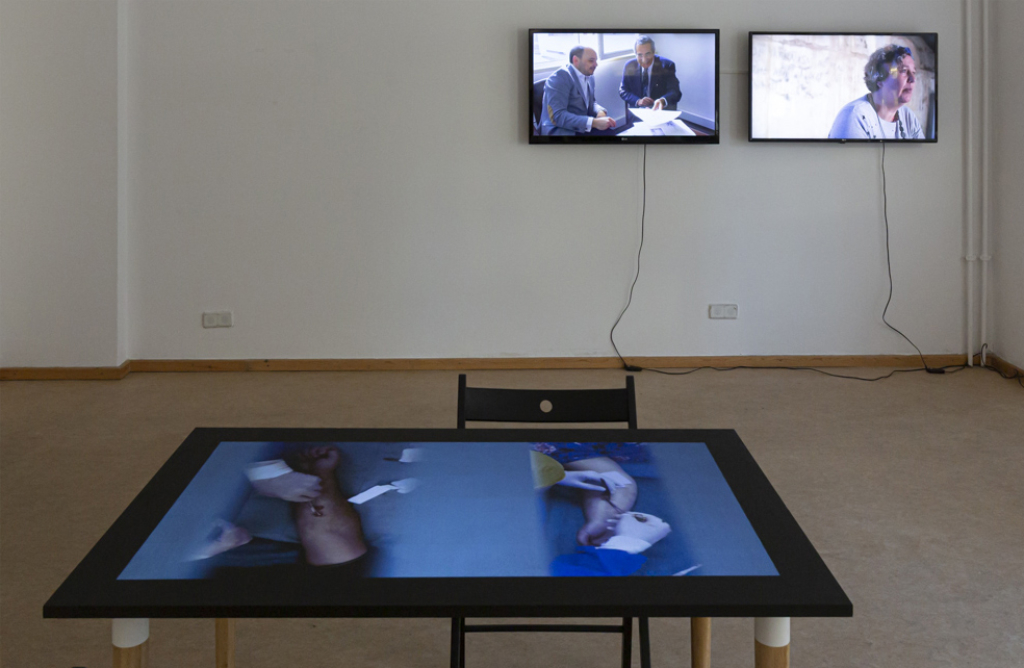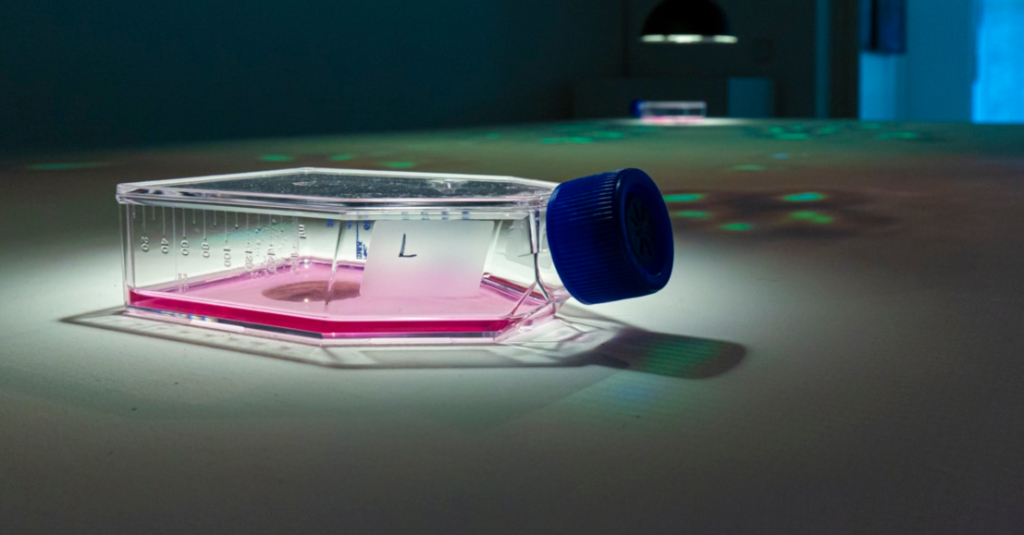Text by CLOT Magazine

Since the late nineties, Marta de Menezes has worked at the intersection of art, biology and biotechnology. Her work is focused on evolution, immunity, life cycles, nature, but how has her artistic practice evolved over the years? My work is focused mainly on one concept; you may call it an umbrella theme, that directs my interest in permanence and since the beginning of my practice while not always being conscious. That concept is identity. It is an old interest for art and artists, and it is for me, a fundamental concept to work on and with at any given time.
It is my conviction that the subject of identity is essential to human knowledge and understanding. Because of this, it is crucial to constantly revisit our perspectives on identity. Who we are, what we are, how we see ourselves, and most importantly, how such conceptions are constantly being challenged by new perspectives and knowledge in a way that will drive the decision about our future selves. These challenges are, for me, the main focus of interest.
This concept of identity is crucial in Paired Immunity, the exhibition project that Marta de Menezes and her partner, the immunologist Luís Graça, are presenting at Art Laboratory Berlin until December 12. Consisting of two works: Immortality for Two and Anti-Marta, the concept of self and non-self, so important for immunology, is an obvious next step in a series of works between them.
While thinking about immortality and how we understand it, it became clear that the project o such a theme would need also to include my life partner, the person I want to share whatever form of immortality with. The idea behind this series is to challenge and question what we as individuals are, and as a couple, what it mean for us to live together for any length of time, how our individual perspectives, experiences, and expertise work together to create something that is not exactly “us” or ourselves. Marta continued.
Interactions with people from different backgrounds and artists can always bring a fresh perspective to the same problems. How has collaborating with artists impacted how you view some aspects of your research? We asked Luís Graça. For him, these collaborations between scientists and artists have a very positive impact on the research teams at the labs. These collaborations make the team members more aware of the implications of their research. They generate new dynamics in the lab: students gain experience in teaching research methods to artists and increased confidence regarding their technical capabilities and knowledge and are often an opportunity to increase the team cohesion around the scientific hypothesis, the process to address those hypotheses and the ultimate aim of their research. Graça explained.



The artworks of Marta de Menezes are a great example of art that conveys a concept – a concept that may be very different from a scientific topic – using materials, methods, and concepts related to science. As a communication tool, they can be frustrating for not providing literal explanations, but their effectiveness lies in their ability to prompt the urge to find answers to the questions raised. The audience does not find answers, they are faced with questions. I have experienced the power of this strategy as an uncommon way to communicate what we do in the laboratory. Graça continued when we asked why is relevant to bring artists to the science labs.
The two works in the exhibition Paired Immunity explores the human immune system, antibodies and rejection through two works that incorporate medical biotechnology. In Immortality for Two Menezes and Graça grow their own immune cells in vitro, immortalising them by introducing cancer-inducing genes through a viral vector. And in Anti-Marta they challenged their immune systems by exchanging skin graft transplants (with an autologous graft as control), which their immune systems rejected.
Menezes and Graça are questioning the limits and understanding of their identity. For de Menezes, making art is a series of conscious decisions she makes to ask the best possible question about any aspect of how the concept of identity can be expanded. Are you exploiting the potential of the body as an artistic medium to modify perception about identity? We asked Marta. Yes, you could say that, and you would be correct. But you can say many other things and they would be equally correct about these works.
Asking the best question and being confronted by a new concept when developing a new project maybe is one of the challenges that every artist has to face. Still, Marta and Luís make look this easily achievable.






